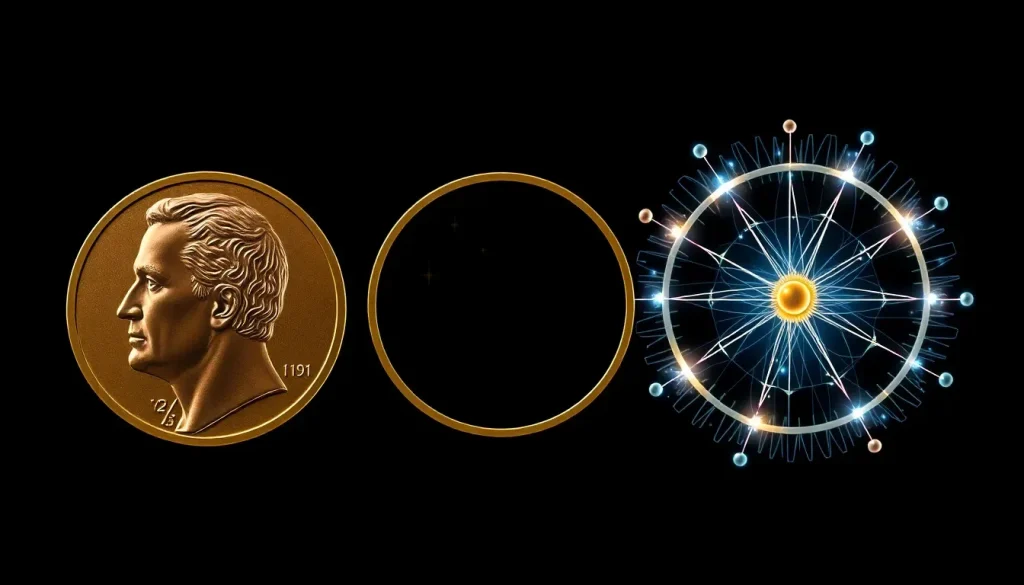Nobel Prize in Physics Awarded to Three Scientists Challenging Quantum Mechanics

Following the announcement of the recent Nobel Prize in Medicine, which recognized the discoverers of a significant defense mechanism in the human body, it is now time to highlight the latest winners of the Nobel Prize in Physics. This year, the honor goes to John Clarke, Michel H. Devoret, and John M. Martinis for their groundbreaking work on the macroscopic quantum tunneling effect and the quantization of energy in electrical circuits.
As customary with the Nobel Prize in Physics, the announcement took place at around 11:45 AM (CET) at the Royal Swedish Academy of Sciences in Stockholm, delivered by the Academy's Secretary General, Hans Ellegren.
The laureates will share a prize of 11 million Swedish kronor, equivalent to approximately 1 million euros. Although this may not be the most lucrative scientific award, it remains one of the most prestigious.
The 2025 Nobel Prize winners have profoundly challenged the transition of quantum mechanics to macroscopic scales. Their experiments involved an electrical circuit demonstrating both quantum tunneling and quantized energy levels in a system large enough to hold in one hand.
This feat is remarkable because, typically, quantum effects are considered negligible when dealing with a relatively large number of particles. Historically, quantum mechanics principles like tunneling were thought to be confined to microscopic examples. It wasn't until the 1980s that applying these principles at macroscopic scales became conceivable.
Understanding the macroscopic quantum tunneling effect
To grasp the significance of the Nobel Prize winners’ discoveries, we must first explore the concept of the quantum tunneling effect. This phenomenon occurs when particles manage to overcome potential barriers without possessing the classical energy required for such a feat, fundamentally challenging traditional physics laws.
- Originated in the 1920s by renowned physicists like Heisenberg, Schrödinger, and Born.
- Officially defined in the 1960s, thanks to Brian Josephson, who demonstrated that pairs of electrons could traverse potential barriers without losing energy.
- Previously regarded as an effect that could not manifest in macroscopic scenarios.
Despite initial skepticism, the work of Clarke, Devoret, and Martinis has proven that quantum tunneling can indeed occur on a scale visible to the naked eye, pushing the boundaries of physics as we know it.
How the Nobel Prize winners conducted their experiments
Between 1984 and 1985, the trio embarked on a series of experiments using a superconducting electronic circuit. Superconductors are materials that conduct electricity without resistance, essential for their groundbreaking findings. Their circuit was configured with a thin layer of insulating material, a setup known as a Josephson junction.
By meticulously measuring the properties of their circuit, they managed to control and examine the phenomena arising when they passed current through it. The charged particles moving through the superconductor behaved as if they were a single particle encompassing the entire circuit.
This macroscopic system, which could fit in the palm of a hand, displayed behavior akin to particles that initially exist in a state where current flows without any voltage. The system was seemingly trapped behind a barrier preventing state changes. Logically, one would expect no measurable voltage on the other side. However, to their surprise, the meters detected a voltage change, indicating that the barrier had been surpassed, thus showcasing the quantum tunneling effect in a non-microscopic system.
The implications of this groundbreaking discovery
As noted by the president of the Nobel Physics Committee, Olle Eriksson, this discovery is "immensely useful," given that quantum mechanics serves as the foundation for all digital technology.
For instance, the transistors found in computer microchips are a prime example of how quantum mechanics permeates our technology. Without the exploration of how certain characteristics could manifest in the macroscopic realm, numerous technological advancements would not have been possible.
Gender representation in the Nobel Prize in Physics
While it's essential to celebrate the laureates recognized by the Royal Swedish Academy of Sciences, it is equally important to highlight the contributions of female scientists, who have faced significant discrimination in this field.
- Since its inception in 1901, only five women have received the Nobel Prize in Physics.
- The first woman, Marie Curie, won the award in 1903 and remains a prominent figure in physics history.
- Curie later became the first person ever to win two Nobel Prizes, underscoring the potential for women in science.
Despite these strides, the numbers reveal a stark reality: once again, the awards this year went to male recipients. While their achievements are undoubtedly deserving of recognition, the question lingers—how many deserving women will never receive this honor?
For further insights into the physics behind this year’s Nobel Prize, consider watching this enlightening video:




Leave a Reply